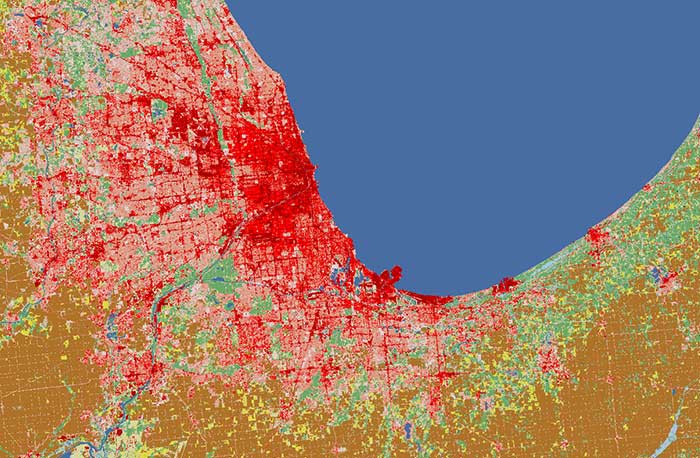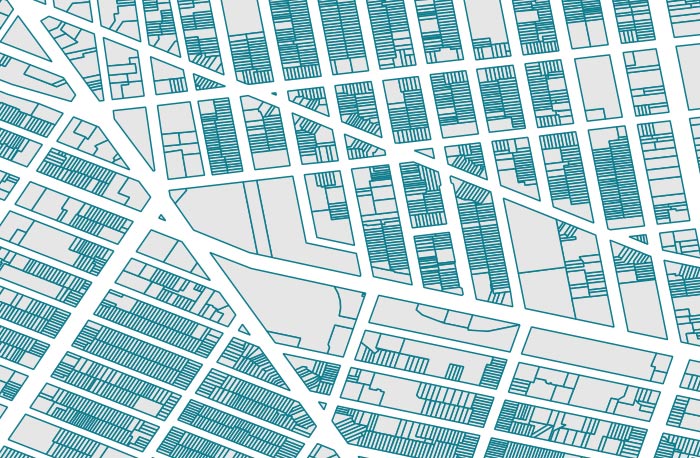View Metadata
Error:
The metadata view for selected schema is not available
<?xml version="1.0"?> <mods xmlns="http://www.loc.gov/mods/v3" xmlns:xsi="http://www.w3.org/2001/XMLSchema-instance" xmlns:rdf="http://www.w3.org/1999/02/22-rdf-syntax-ns#" xmlns:xlink="http://www.w3.org/1999/xlink" version="3.7" xsi:schemaLocation="http://www.loc.gov/mods/v3 http://www.loc.gov/standards/mods/v3/mods-3-7.xsd"> <titleInfo> <title>California Salmonid Habitat Inventory: Russian River Basin, California, 1996-2002</title> </titleInfo> <name type="corporate"> <namePart>Circuit Rider Productions</namePart> <role> <roleTerm authority="marcrelator" type="text">creator</roleTerm> </role> </name> <genre valueURI="http://id.loc.gov/authorities/genreForms/gf2011026297" authority="lcgft">Geospatial data</genre> <genre valueURI="http://rdvocab.info/termList/RDAContentType/1001" authority="rdacontent">cartographic dataset</genre> <typeOfResource>cartographic</typeOfResource> <typeOfResource>software, multimedia</typeOfResource> <physicalDescription> <form>Shapefile</form> <extent>0.474</extent> <digitalOrigin>born digital</digitalOrigin> </physicalDescription> <language> <languageTerm authority="iso639-2b" type="code">eng</languageTerm> </language> <abstract lang="eng" displayLabel="Abstract">This line shapefile represents the Russian River Watershed portion of the California Salmonid Habitat Inventory- a quantitative stream habitat survey focused on stream habitat restoration. Field biologists walk in-stream from confluence to headwaters of streams identifying pools, riffles, and flatwater areas as individual habitat units. Quantitative attributes include width, depth, substrate, bank vegetation, and slope to help identify restoration potential, stream health and monitoring potential.</abstract> <abstract lang="eng" displayLabel="Purpose">This data is inteded to aid in internal managment descisions regarding stream restoration projects and potential.</abstract> <note lang="eng" displayLabel="Preferred citation">Circuit Rider Productions and National Oceanic and Atmospheric Administration (2002). California Salmonid Habitat Inventory: Russian River Basin, California, 1996-2002. Circuit Rider Productions. Available at: http://purl.stanford.edu/cz715gw6055</note> <note displayLabel="Supplemental information">All stream surveys are dynamically segmented against 100k base hydrography routes. The Dynamic Segmentation process is accomplished by 1) Preparing a hydrography arc coverage with a unique numeric value for each named stream 2) Ensuring flow direction for each stream 3) Building route/section topology for each stream 4) Preparing the habitat table as linear event data with a)measure distances based on field inputs and b)a unique key value for each named stream 5) Calibrating routes based on field input from habitat table 6) Displaying habitat tables in ArcView, converting to ArcView shapes and distributing to field personnel. 1. DFG has obtained US Geologic Survey (USGS) Digital Line Graph (DLG) 100,000 scale hydrography (See Appendix for Hydro Meta Data and structure). In 1993, the US Environmental Protection Agency (EPA) attached the River Reach File Version 3 (RF3) addressing system to California's hydrographic coverage Arc Attribute Table (.AAT). Arcs along the same named watercourse share a common primary name code, or PNMCD. The unique key value for each stream is the EPA national standard PNMCD. 2. Prior to building hydrography route/section topology, streams must have consistent linear direction. I developed an Arc Macro Language (AML) method for establishing direction of all streams based on topology with no operator (See Appendix for flow.aml and lake.aml). This process pathwalks each named stream from its headwaters to its mouth and ensures all arcs point downstream (including double lined streams). The DLG MINOR5 field is populated with the arc numeric sequence of each stream from the mouth. 3. I developed an ArcEdit AML which creates Route/Section topology (See Appendix for mkroute.aml). The blanket Arc level MAKEROUTE command will not ensure direction of all routes. The AML creates one route for each unique PNMCD, in which the beginning measure of the route is at the streams confluence (arc MINOR5 = 1 from flow.aml) and the ending measure is at the streams headwater. The resulting Route Attribute Table (.RAT) has one record per unique PNMCD. The resulting Section Attribute Table (.SEC) has one record for arcs along each PNMCD. 4. Preparation of habitat data as event tables contains the following processes: A) Insure the table has a properly populated route relate item and B) create and populate measure items. In some cases field personnel will not have the PNMCD value for the surveyed stream, and will enter instead a latitude and longitude of the stream confluence, the township range and section number (called legal) and/or the stream name from the USGS 7.5 Minute Quadrangle. By cross referencing the quadrangle, lat/lon coordinates, legal description or the stream name with the RF3 file, I find and enter the proper PNMCD value in the habitat table. Each habitat table data will relate to the .RAT on the PNMCD. The habitat table contains one record per habitat unit. The LENGTH field is the length of each habitat unit, measured in feet. Measure fields FROM, TO (for linear events), and LOCATION (for point events) are added to the habitat table. The FROM field is equal to the previous FROM value (0 for the first record). The TO field is equal to the FROM field plus the LENGTH field. The LOCATION field only populated when point event locations occur. While occurring anywhere in a habitat unit, point events are surveyed with the same length as a habitat unit. The LOCATION field equals half of the FROM FROM field plus the TO field. Measure items are converted to meters, the units of the hydrography coverage projection. Each record of a habitat table will relate to the .SEC on the measure items FROM, TO or LOCATION. 5. A point coverage for each survey, is made from each tributary's confluence or road crossings and the end of the survey. The end of survey point is digitized from a photocopied USGS quadrangle. The points are attributed with the length to the mouth taken from the habitat table, in meters. The Arc command CALIBRATEROUTES uses the point coverage to correct the arc measured distances with the field observed distances. 6. In Arcview, a view is added to a project and the hydrography route topology added to the view. The habitat event table is added to the project. With the view the active document, ADD EVENT THEME from the VIEW menu is chosen. The Add Event Theme dialogue box is populated, and the survey is displayed as an event theme. The THEME CONVERT TO SHAPE menu choice converts the event theme to a shape file. The shape file can be displayed and classified on any or multiple fields in the Habitat Inventory. The process is repeated for point events."</note> <note displayLabel="WGS84 Cartographics">This layer is presented in the WGS84 coordinate system for web display purposes. Downloadable data are provided in native coordinate system or projection.</note> <subject authority="lcsh" lang="eng"> <topic authority="lcsh" authorityURI="http://id.loc.gov/authorities/subjects.html">Salmonid</topic> </subject> <subject authority="lcsh" lang="eng"> <topic authority="lcsh" authorityURI="http://id.loc.gov/authorities/subjects.html">Restoration monitoring (Ecology)</topic> </subject> <subject authority="geonames" lang="eng"> <geographic authority="geonames" authorityURI="http://www.geonames.org/ontology#" valueURI="http://sws.geonames.org/5397100/">Sonoma County (Calif.)</geographic> </subject> <subject authority="geonames" lang="eng"> <geographic authority="geonames" authorityURI="http://www.geonames.org/ontology#" valueURI="http://sws.geonames.org/5372163/">Mendocino County (Calif.)</geographic> </subject> <subject lang="eng"> <geographic>Russian River Watershed (Calif.)</geographic> </subject> <subject> <temporal point="start" encoding="w3cdtf">1996</temporal> <temporal point="end" encoding="w3cdtf">2002</temporal> </subject> <subject authority="ISO19115TopicCategory"> <topic authority="ISO19115TopicCategory" authorityURI="http://www.isotc211.org/2005/resources/Codelist/gmxCodelists.xml#MD_TopicCategoryCode" valueURI="environment">Environment</topic> </subject> <subject authority="ISO19115TopicCategory"> <topic authority="ISO19115TopicCategory" authorityURI="http://www.isotc211.org/2005/resources/Codelist/gmxCodelists.xml#MD_TopicCategoryCode" valueURI="inlandWaters">Inland Waters</topic> </subject> <subject> <cartographics> <scale>Scale not given.</scale> <projection>EPSG::26910</projection> <coordinates>W 123°20ʹ29ʺ--W 122°50ʹ38ʺ/N 39°11ʹ42ʺ--N 38°23ʹ12ʺ</coordinates> <coordinates>W 123°20ʹ29ʺ--W 122°50ʹ44ʺ/N 39°11ʹ40ʺ--N 38°23ʹ13ʺ</coordinates> </cartographics> </subject> <subject displayLabel="WGS84" authority="EPSG" valueURI="http://opengis.net/def/crs/EPSG/0/4326"> <cartographics> <projection>EPSG::4326</projection> </cartographics> </subject> <originInfo> <dateIssued encoding="w3cdtf" keyDate="yes">2002</dateIssued> <dateValid encoding="w3cdtf" point="start">1996</dateValid> <dateValid encoding="w3cdtf" point="end">2002</dateValid> <place> <placeTerm type="text">Windsor, California, US</placeTerm> </place> <publisher>Circuit Rider Productions</publisher> </originInfo> <location> <url usage="primary display">https://purl.stanford.edu/cz715gw6055</url> </location> <recordInfo> <languageOfCataloging> <languageTerm authority="iso639-2b" type="code">eng</languageTerm> </languageOfCataloging> <recordContentSource>Stanford</recordContentSource> <recordOrigin>This record was translated from ISO 19139 to MODS v.3 using an xsl transformation.</recordOrigin> <recordIdentifier>edu.stanford.purl:cz715gw6055</recordIdentifier> </recordInfo> <extension displayLabel="geo"> <rdf:RDF xmlns:gml="http://www.opengis.net/gml/3.2/" xmlns:dc="http://purl.org/dc/elements/1.1/"> <rdf:Description rdf:about="http://purl.stanford.edu/cz715gw6055"> <dc:format>application/x-esri-shapefile; format=Shapefile</dc:format> <dc:type>Dataset#LineString</dc:type> <gml:boundedBy> <gml:Envelope gml:srsName="EPSG:4326"> <gml:lowerCorner>-123.341425 38.386997</gml:lowerCorner> <gml:upperCorner>-122.84551 39.194485</gml:upperCorner> </gml:Envelope> </gml:boundedBy> </rdf:Description> </rdf:RDF> </extension> <relatedItem type="host"> <titleInfo> <title>Russian River watershed GIS</title> </titleInfo> <location> <url>https://purl.stanford.edu/zt526qk7324</url> </location> <typeOfResource collection="yes"/> </relatedItem> <accessCondition type="useAndReproduction">These data are licensed by Stanford Libraries and are available to Stanford University affiliates only. Affiliates are limited to current faculty, staff and students. Non affiliates seeking access should contact the publisher directly. These data may not be reproduced or used for any purpose without permission.</accessCondition> <accessCondition type="copyright">Copyright ownership resides with the originator.</accessCondition> </mods>
The metadata view for selected schema is not available
Please select another metadata view. Alternately, try downloading the file or reaching out to the holding institution.


